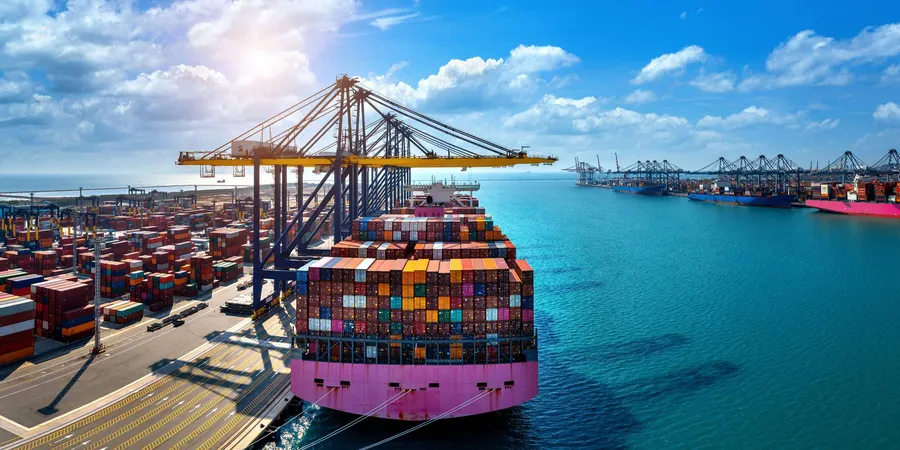What is a Letter of Credit in Shipping?
International trade is very competitive, and businesses, banks and financial institutions go the extra mile to provide the best service to their customers.
How can buyers and sellers located in different countries ensure that the other can be trusted? How is the creditworthiness of the buyer established? How does the buyer know that the goods he has purchased are shipped?
The buyer needs the goods shipped from their origin or delivered to their destination before making payment to the seller. The seller needs to ensure that he gets paid by the buyer either before or upon delivery of the goods.
How are these specific issues addressed? This is where a letter of credit or LC comes in handy. It is a guarantee issued by a bank for payment to the buyer while ensuring that the goods are shipped in good order.
A letter of credit is a banking instrument that guarantees payment from the buyer to the seller. An LC issued by the bank appointed by the buyer, showing the seller as the beneficiary, guarantees payment in full if the buyer fails to make payment as agreed. When part of the payment has been made by the buyer, the bank will then pay the remaining amount to the seller.
The seller has to ship the cargo and deliver all the documents required for clearance of the cargo at the buyer’s end, to the nominated bank before he can get paid.
A letter of credit is known by different names such as a letter of undertaking, documentary credit, letter of guarantee, etc.
Parties to a Letter of Credit
A letter of credit has 3 main parties to it. They are:
- The importer of goods (buyer)
- The bank that issues the LC
- The exporter (seller)
The importer applies to the bank requesting to issue a letter of credit showing the exporter as the beneficiary.
For a fee which is usually a percentage of the value of goods traded, the bank issues an LC. The bank might also require some kind of collateral from the buyer.
The beneficiary is the exporter of goods.
How does the Letter of Credit Work?
The task of overseeing letters of credit issued for international trading is with the International Chamber of Commerce (ICC).
To issue an LC, banks normally require a security from the importer in the form of stocks, bonds, or cash. This is collateral for any failure from the importer’s side in meeting its commitments.
Banks also charge a fee for the service rendered which is a percentage of the total value of the letter of credit.
The importer applies to the bank for the issue of a letter of credit favouring the bank account of the exporter of goods as the beneficiary.
As we have seen earlier in this article, this application is made against a pledge of securities or cash from the importer to cover any unforeseen failures in honouring the payment that is due to the exporter.
Once the above arrangements are in place, the issuing bank prepares the LC and forwards it to the exporter’s nominated bank.
The exporter arranges for the shipment of goods and once it has sailed, the hard copies of all the shipping documents that are required for clearance of the cargo are sent to his bank.
This set of documents will be forwarded by them to the bank issuing the letter of credit (the buyer’s nominated bank). The documents must include the following:
- The commercial invoice
- Packing list
- Clean bill of lading
- Certificate of origin
Different banks may have different requirements for other certificates or documents issued by the relevant authorities of the exporting country.
The importer is free to make the payment anytime to the bank issuing the LC upon which the bank will release the cargo clearance documents. Hence, it is in the importer’s interest to make payment and get the clearance documents from the bank for clearance of the goods on time.
The bank issuing the LC will then remit the proceeds to the bank nominated by the exporter.
What happens in the event of a default in payment by the importer? Typically, the bank issuing the letter of credit would honor the payment. It would pay the exporter’s bank the full value of the LC or the remaining portion if payment has been made in part by the importer.
They would then proceed to negotiate the letter of credit with other parties to make good the value of LC that has been paid for.
As we can see here, a letter of credit is mostly a negotiable instrument. It may also be transferrable to another party other than the exporter and that takes us to the topic of the different types of LC.
Types of Letters of Credit
Banks may issue different types of LC to meet the different business requirements. A brief explanation of each of the main types of letters of credit is given here.
Commercial Letter of Credit
This is the most basic and common LC used in international trade. The bank that issues the LC undertakes to pay the beneficiary directly.
Standby Letter of Credit
When a standby letter of credit is issued by a bank, the buyer makes payment to the seller. Only when the buyer is not able to meet this commitment, is the seller paid by the bank.
Confirmed Letter of Credit
In this type of letter of credit, the seller’s nominated bank guarantees the LC issued by the buyer’s bank. A confirmed letter of credit ensures that the beneficiary receives his payment even when the buyer and the issuing bank fail to make the payment.
Revolving Letter of Credit
This type of LC covers several transactions between the buyer and seller. The total of all these transactions should not exceed the amount mentioned in the letter of credit and it is valid only for a specific period that is mentioned in the LC. This is arrangement is common between banks and their regular customers.
Revocable Letter of Credit
The terms and conditions of a revocable letter of credit can be changed or cancelled anytime by the issuing bank. These changes or cancellations do not need any prior intimation from the bank to the beneficiaries.
Irrevocable Letter of Credit
An irrevocable letter of credit is just the opposite of the revocable LC. No amendments or cancellations to the terms and conditions of the LC are allowed in an irrevocable LC.
Fully Funded Documentary Letter of Credit
A bank that provides a letter of credit is sometimes covered against any issues arising out of payment defaults by the customer, by a separate account in his name. A letter of credit issued under the backing of such an account is called a Fully Funded Documentary Letter of Credit (FFDLC).
A Basic Example for a Letter of Credit
Swiftrade based in Chennai, India deals in shoe uppers. It receives an order from Maxime Shoes based in Bari, Italy to supply 6000 shoe uppers. Both companies are doing business with each other for the first time and have agreed to settle payment using a letter of credit.
Upper Bank in Bari is the banker nominated by Maxime Shoes. Maxime Shoes authorizes Upper Bank to issue LC favouring Swiftrade. The bank issues the letter of credit showing Swiftrade as the beneficiary. This LC is forwarded to The State Bank in Chennai, which is Swiftrade’s nominated bank.
Swiftrade arranges shipment of the shoe uppers in a 20’ GP container and gets all the shipping and clearance documents ready. Subsequently, the container is put on a vessel sailing to the port of Bari.
All the original shipment clearance documents are delivered to The State Bank who would forward them to the Upper Bank.
Meanwhile, Maxime Shoes pays the amount mentioned in the LC, within an agreed timeframe, to Upper Bank. Upper bank remits this amount to The State Bank and releases the original shipment clearance documents to Maxime Shoes for clearance of the consignment upon arrival at Bari.
In the event of Maxime Shoes not honouring payment within the agreed period, the Upper bank will credit the amount mentioned in the LC to The State Bank who pays Swiftrade.
Establishing the Trust Between Bank and the Customer
Letters of credit are usually issued by banks within 2-3 days after ascertaining that the buyer requesting the LC is creditworthy and will honour his commitments.
When customers use a regular bank for their LC requirements, after the first few transactions when trust and the necessary credentials have been established, it becomes easier for all parties to deal with each other.
A bank confirms the issue of a valid LC with another bank through a Bank Confirmation Letter (BCL). This is not to be mistaken for a guarantee for payment. It is just an assurance of the customer’s creditworthiness.
A BCL may also be issued to a customer in other cases such as to start a new business joint venture or securing a mortgage, etc.
Reference: Marine Insight





